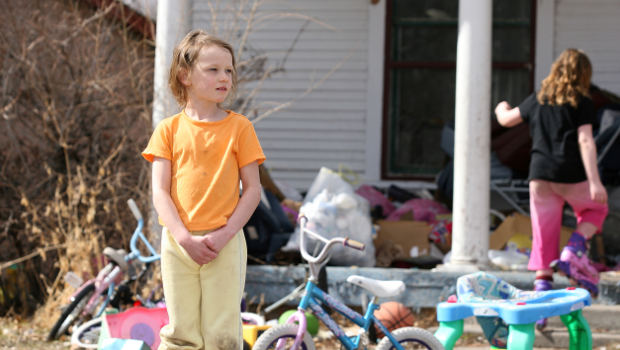What’s wrong with the term ‘social determinants of health’?

Let’s change our language to allow room for resilience, hope, and effective intervention, writes Dr. Gregory Simon
by Gregory Simon, MD, MPH, Kaiser Permanente Washington psychiatrist and senior investigator at Kaiser Permanente Washington Health Research Institute
Clinicians, researchers, policymakers, and academics have long looked at the ways that people thrive, merely survive, worsen, or even die as a result of traumatic experiences or harmful surroundings. These topics of study can broadly be called resilience and recovery.
One of today’s most often used terms is “social determinants of health.” I have a beef with that, and it’s not just that I’m being picky about a single word.
I absolutely agree with putting “social” right up front. It’s a fact that zip code often has a greater effect on health than genetic code. Who has a better chance of good health: the person who lives in a clean, safe environment, or the one who lives in a polluted city rife with violent crime? The effects of social factors — such as trauma, loss, and deprivation — are especially relevant to mental health.
It’s the specific word “determinants” that I’d want to change. Factors like trauma, violent crime, and homelessness often have powerful negative or positive influences on physical and mental health. The effects of these can certainly overwhelm the treatments we provide. But not always.
There’s so much to learn when bad things don’t happen: a person with schizophrenia who has a job and a family, the person who’s experienced trauma and has recovered. That’s interesting. That’s worth studying.
Negative environments and traumatic experiences certainly increase the odds of bad physical and mental health, but odds are not destiny. The impacts of social and environmental factors are almost always probabilistic (changing the odds) rather than deterministic (leaving no way out). The term “social determinants” may sound more powerful than “social influences,” but it is also less accurate.
The word “determinants” doesn’t allow room for resilience, hope, or effective interventions. Some people defy the odds. And there are sometimes things that health care can do to improve the odds.
Let’s embrace recovery and healing
Adopting a deterministic — rather than probabilistic — view of social influences on health can distract us. When we study mental health outcomes, only a probabilistic view will allow us to understand the relationship between vulnerability and resilience. True understanding requires us to move beyond simple questions to questions about interactions. Rather and asking, “Does a specific environmental factor matter on average?” we can ask, “For whom does that factor matter more or less?” “Under what conditions is the health impact larger or smaller?”
That understanding arises from a view that while people are impacted by societal and environmental factors, they’re also resilient and recovery is possible.
At Kaiser Permanente Washington Health Research Institute, we look for better ways of caring for people through testing the development of interventions (or interruptions in the norm). In these tests, we’ll likely find that people who’ve already experienced trauma, loss, and deprivation are influenced much more strongly by environmental and social factors — but not necessarily always.
A probabilistic research view focuses us on disrupting specific linkages between social or environmental factors and the resulting mental health problems, such as depression or anxiety. We certainly hope that the association between childhood victimization and adult post-traumatic stress disorder is not deterministic. Instead, we hope it can be modified by timely and specific intervention. Embracing the complexity of a probabilistic view can help us to identify ways of supporting our most vulnerable citizens by changing those factors that have the biggest public health impact; that probabilistic — rather than deterministic — can usually direct resources to those with greatest need. For example, interventions to address the long-term effects of early childhood trauma will likely have greatest benefit in those who were already disadvantaged.
Mona Hanna-Attisha is the pediatrician who revealed the devastating effects of lead-contaminated water in Flint, Michigan. She advocated for immediate action to interrupt ongoing lead exposure, but the lead poisoning epidemic had no single source. She understood that toxic lead levels in children’s drinking water reflected a complex interaction of governmental decisions about water sources, decaying public infrastructure, and outdated plumbing in individual homes and schools. So she advocated for governmental action to address systemic problems and educated individual families about reducing exposure. She also realized that controlling every source of contamination would not reverse the chronic effects of childhood lead exposure. If you cut off all lead exposure, you still have 50 years of work to do. Even if there was a single, identifiable source of lead poisoning, many children will be affected for decades to come.
Those of us working in mental health regularly face complicated probabilistic scenarios like the Flint water crisis. Our job is to provide a range of appropriate responses that include both advocacy to address systemic social causes of poor mental health and a search for effective therapeutic and rehabilitative interventions.
Do we need more research in the name of “social determinants of health?” No. Bad environments don’t always produce bad health. Social factors influence the probability of bad health outcomes rather than determine them. Let’s swap “determinants” for “influencers.” Nothing is your destiny.
Learn more about Kaiser Permanente Washington Health Research Institute. Sign up for our free monthly newsletter.


